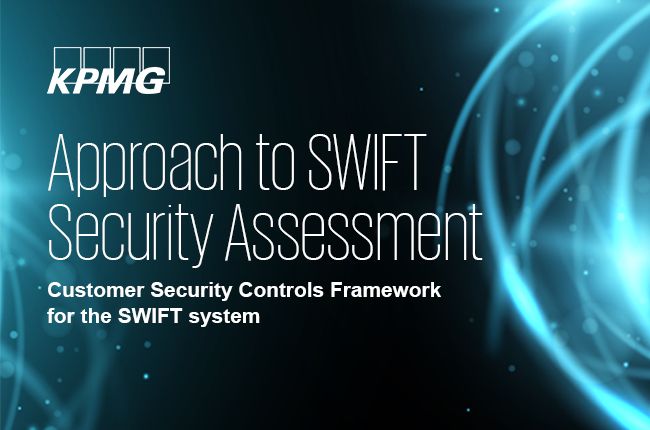IFRS 9 for Banks
IFRS 9 for Banks
The Way Forward
IFRS 9 – The new era of expected loss provisioning
The IFRS Roadmap in Vietnam was officially announced in Decision No.345/QD-BTC on 16 March 2020 by the Ministry of Finance (MoF), a year after introduction of the draft version. Against the mandate by the MoF and economic distress caused by COVID-19 outbreak, KPMG now view the application of IFRS to be more challenging than anticipated as banks in Vietnam plan forward to embrace IFRS 9.
IFRS 9 represents a new era of expected credit loss provisioning. The global financial crisis (GFC) of 2007-9 highlighted the systemic costs of delayed recognition of credit losses by banks and other lenders. These delays ultimately resulted in the recognition of credit losses that were widely regarded as “too little, too late”. Following the crisis, the G20 leaders, investors, regulatory bodies and prudential authorities called for action by accounting standard setters to improve loan-loss impairment standards and practices.
After intensive deliberations and consultations, the International Accounting Standards Board (IASB) ultimately responded to the G20’s call to action, and in Jul 2014 published IFRS 9 as the new standard for accounting for financial instruments. The most significant innovation is the introduction of the Expected Credit Loss (ECL) impairment model when recognizing loss allowances, which aims to promote earlier recognition of credit risk.
The new impairment approach now requires banks to recognize expected credit loss (ECL) and to update the amount of ECL recognized at each reporting date to reflect changes in the credit risk of financial assets. This new approach is forward-looking and eliminate the threshold for the recognition of credit losses, so that it is no longer necessary for a ‘trigger event’ to have occurred before credit losses are reported. Apart from historical and current information – for the first time – forecasted macroeconomic information such as GDP growth rate, unemployment %, and housing pricing index must be considered when generating a probability weighted.
Business impacts of IFRS 9 on banks

Most stakeholders believe that IFRS 9 will have a significant impact on loan-loss allowance, earnings, and capital given that ECL will be measured using macroeconomic forecasts that are inherently uncertain. In addition, IFRS 9 introduces the concept of “Staging”. When a borrower experiences a material deterioration in credit quality (but continues to perform), and an associated financial asset transitions from “Stage 1” to “Stage 2”, loan-loss allowance increases from 12-month to lifetime expected loss.
Based on KPMG implementation experience on IFRS 9, commonly observed business impacts include:
Increased volatility in credit cost
Reported ECL are more volatile given its inherent forward-looking nature and banks are expected to focus on better credit cost discipline. Over each quarter or reporting interval, banks have had to explain ECL estimates which exhibited procyclicality swings as financial assets are systematically shifted from Stage 1 to Stage 2;
Higher credit cost in retail book
Banks experienced higher credit cost on credit card with large undrawn and underperforming mortgage loans with longer tenure. At origination, banks have consistently allocated higher risk premium in their pricing mechanism to cover higher credit cost for retail book, and have had to learn to manage external headwinds from weakening property prices and unexpected distressed drawdown due to deteriorating household income during COVID-19;
Post model overlay on ECL impairment due to COVID-19
Guided by IASB, banks have attempted to reflect different macro scenarios and their associated weightings, in order to quantify the pandemic’s impact on ECL impairment model estimates. Existing model previously built on periods of benign economic condition may not effectively handle “COVID-19 macroeconomics”, and senior management have had to apply post-model overlay to meet IFRS 9 expectations.
What banks should do now

Given the uncertainties associated with (first-time) implementation of the new and far more complex ECL impairment models. we recommend banks to plan now and prepare themselves for any negative impact to business models and stability of bank’s operation. A high-quality implementation plan should cover:
IFRS 9 Program Governance
Banks to establish board level project sponsorship and engagement follow by strong senior management lead of implementation project (typically Finance-lead or Risk-lead);
Financial Impact Assessment on ECL
Banks to determine impact assessment methodology by customizing modelling approach for material portfolios with extrapolation for smaller books;
IFRS 9 Gap Analysis
Banks to conduct assessment of current state in terms of models and methodologies, including the review of data availability and data quality;
IFRS 9 Roadmap Formulation
Banks to prepare multi-year implementation roadmap for senior stakeholders, highlight key dependencies and maintain flexibility for early adoption.
Technology solutions for banks

Based on observed implementation journey from successful adopters, the technology for IFRS 9 has had a variety of key impacts on the way that banks operate, in three main areas: data, computation and languages / modelling environment.
Most banks have had to upgrade their calculation environments; some may even have had to run different calculation environments in parallel. In addition, banks have had to carry out many stress tests, especially what-if scenarios to understand their ECL impairment model sensitivities.
Finally, as new ECL impairment models have become more demanding, there has been rapid growth in the use of new computing languages (such as Python and R) or an expansion in the use of traditional mathematical languages as MATLAB and SAS. To develop an effective, lasting technology solution, banks must repurpose their existing tools, extend their standardized features, make use of new flexible more open-source computing languages and develop a clear and well-articulated data strategy, which is essential if they want flexible, scalable models. Banks also need to take a holistic view of the credit lifecycle, and view these developments as part a deep sea-change in risk and finance, one that will affect the way they operate for decades to come.

